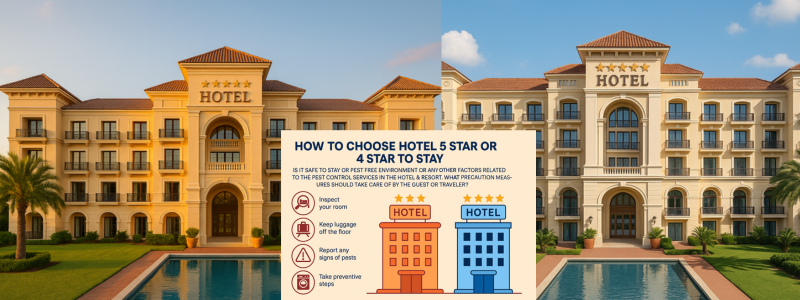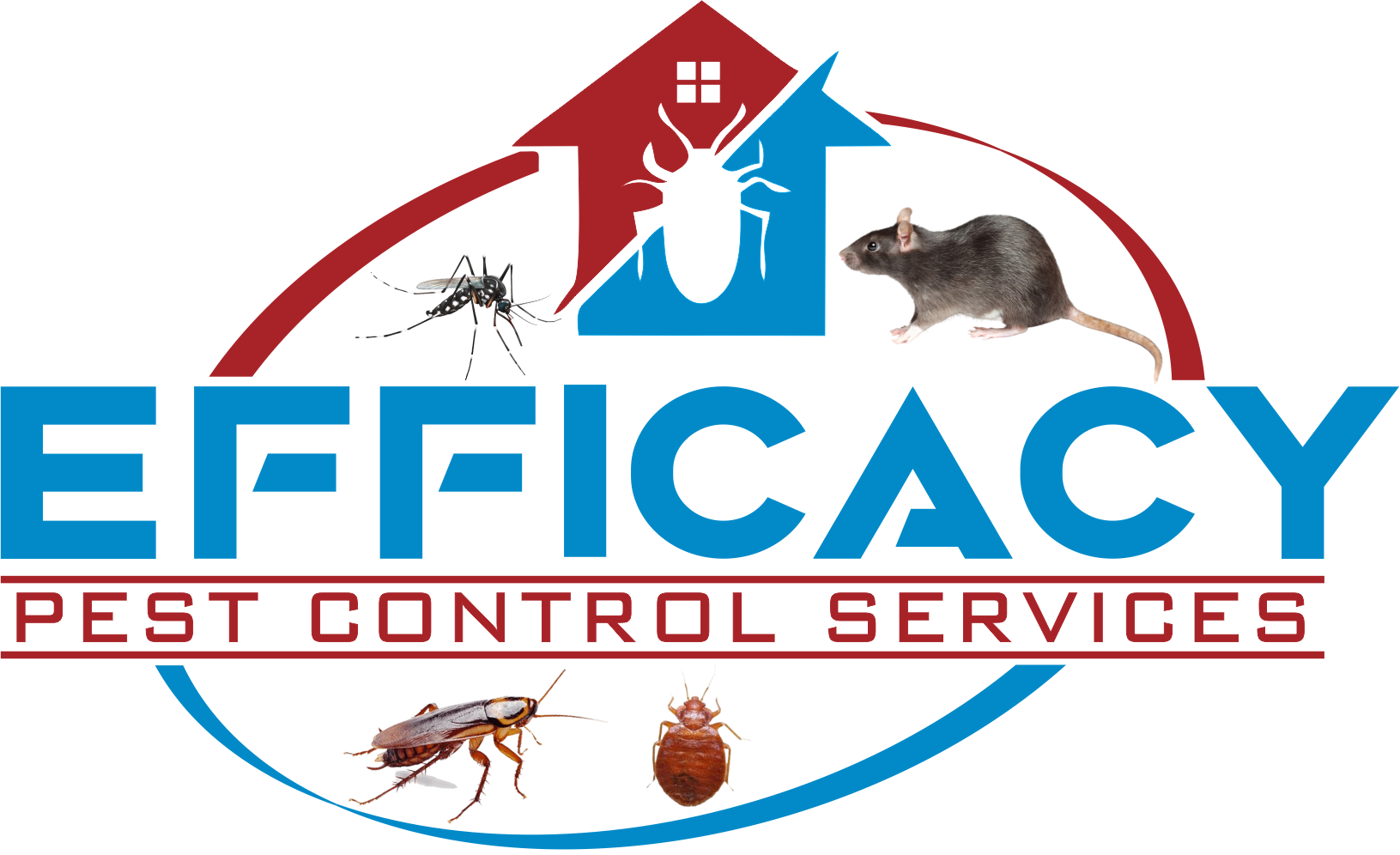
Choosing a Hotel with Confidence: Safety, Pest Control & Guest Precautions
When travelers choose between 5-star or 4-star hotels, many focus on amenities, décor, location and service. But one critical factor often overlooked is hygiene standards—especially pest management. As a traveler, you want assurance that your stay is safe, pest-free, and sanitary. As a pest control company (like Efficacy Pest Control in Goa), championing this awareness is also part of building trust. Below is a guide you can share with guests (or hoteliers) on how to assess hotel pest safety and what guests can do to protect themselves.
Best Pest control in Goa
1. Why pest control matters in hotels & resorts
Hotels are high-traffic environments where pests (bed bugs, cockroaches, rodents, flies, ants, mosquitoes) can more easily get introduced via luggage, deliveries, or landscaping.
An infestation (or even isolated sightings) can severely damage a hotel’s reputation, lead to negative reviews, and hurt repeat business.
From a public health standpoint, pests can carry pathogens, trigger allergies, spoil food, bite guests (e.g. bed bugs or fleas), and contaminate surfaces.
Therefore, even in high-end 5-star or 4-star properties, stringent pest control programs are essential — stars don’t guarantee bug-free conditions, but better management protocols often correlate with higher standards.
2. What to look for in a 5-star vs 4-star hotel (pest hygiene lens)
When comparing hotels of different star levels, these are the pest-control and hygiene features you should look for or inquire about:
| Feature | Why It Matters | Best Practice |
|---|---|---|
| Pest management policy / certification | It shows whether the hotel takes pest control seriously | Ask if the hotel uses Integrated Pest Management (IPM) (non-chemical first, minimal pesticide use) |
| Regular inspections & monitoring | Early detection prevents escalation | The hotel should have periodic inspections of guest rooms, common areas, kitchens, storerooms |
| Records and transparency | A hotel that logs pest reports is more accountable | They should maintain logs, share summaries with management, and act on issues promptly |
| Sealing / structural maintenance | Pests enter through cracks, gaps, drains, utility lines | Good hotels seal gaps, install door sweeps, repair cracks. |
| Sanitation and housekeeping standards | Food residue, trash, clutter attract pests | Frequent cleaning, proper waste removal, no open trash, prompt clearing of spills |
| Discreet, safe pest treatments | Guests expect minimal disruption | Use of least-toxic, targeted treatments; scheduling at non-peak hours; heat treatments or non-chemical means as needed |
| Staff training & reporting | Many pest problems go unnoticed unless staff are alert | Housekeeping, maintenance, front desk should be trained to spot signs (droppings, live insects, unusual odors) |
| Guest feedback & rapid response | The hotel must act swiftly on guest complaints | A good policy would relocate rooms, remediate immediately, and follow up with the guest |
In general, 5-star hotels should have more resources and tighter protocols for all of the above. But a well-run 4-star hotel with a strong pest control partner can be equally safe. The key is not the star rating alone, but how well pest risk is managed.
3. Is it safe to stay in hotels? (Pest risk reality check)
Yes, staying in properly maintained 4- or 5-star hotels is generally safe — but “properly maintained” is the operative phrase. Even top hotels occasionally may detect a pest but handle it effectively. The risk of a major infestation is low if protocols are in place. The following factors raise risk:
If you choose a hotel with proactive pest control, regular inspection, good housekeeping, and an open attitude toward guest feedback, your risk is minimal.
4. Precaution measures every guest/traveler should adopt
Pull back the bed sheets and inspect mattress seams, corners, and the headboard area for small dark spots (fecal marks) or shed skins (possible sign of bed bugs).
Check the inside of drawers, corners of carpets, and behind furniture edges.
Check around the mattress label and the baseboard edges.
Use luggage racks (preferably metal) rather than placing your suitcase on the bed or carpet.
Keep luggage zipped and sealed.
In extreme caution, keep your suitcase in the bathroom or on a hard surface initially.
Unpack only after you’re confident the room is clean. Use sealed plastic bags to store clothes.
A small LED light inside drawers or near corners can help detect crawling insects.
If you notice live bugs, shed skins, or unexplained bites, notify management immediately and request a room change, ideally to a different floor or building wing.
If your stay is long, run laundry at high heat to kill any hitchhiking pests.
Don’t leave food open, store snacks in sealed containers.
Dispose of trash promptly in sealed bags.
Don’t leave dirty dishes overnight.
If you carry used upholstery, chairs, or other items, inspect or isolate them.
Some guests carry a thin, bed-bug–resistant encasement or even disposable mattress-top covers to act as a barrier.
Inspect your clothing / luggage before returning home. Vacuum or launder items immediately.
These simple steps can reduce the already low risk of pest exposure to near zero.
5. How your company (Efficacy Pest Control, Goa) can position itself / what to offer
6. Sample scenario (applying these in practice)
Imagine a guest choosing between two hotels in Goa:
Hotel A is a 5-star property with a visible pest control certificate displayed in the lobby. The manager explains they use AI sensors in back-of-house to detect rodent movement, monthly inspections, and a maintenance log of sealing cracks and gaps. Housekeeping staff are trained to look for bed-bug indicators.
Hotel B is a 4-star property that does not proactively advertise pest control. The staff says they hire “a local pest company now and then.”
As a guest, you would feel more confident entering Hotel A because you see a structured system in place.
Even so, upon check-in you follow the precaution steps above and briefly inspect the room. Suppose you notice a small reddish spot on a mattress seam — you alert management. Because Hotel A has a responsive system, they relocate you instantly and send in a pest technician to re-inspect. This responsiveness, combined with your checks, gives peace of mind.
7. Summary and key takeaways
Need a hotel pest safety audit in Goa?
Efficacy Pest Control can deploy IPM + AI monitoring, staff training, and rapid response tailored to coastal climates.


